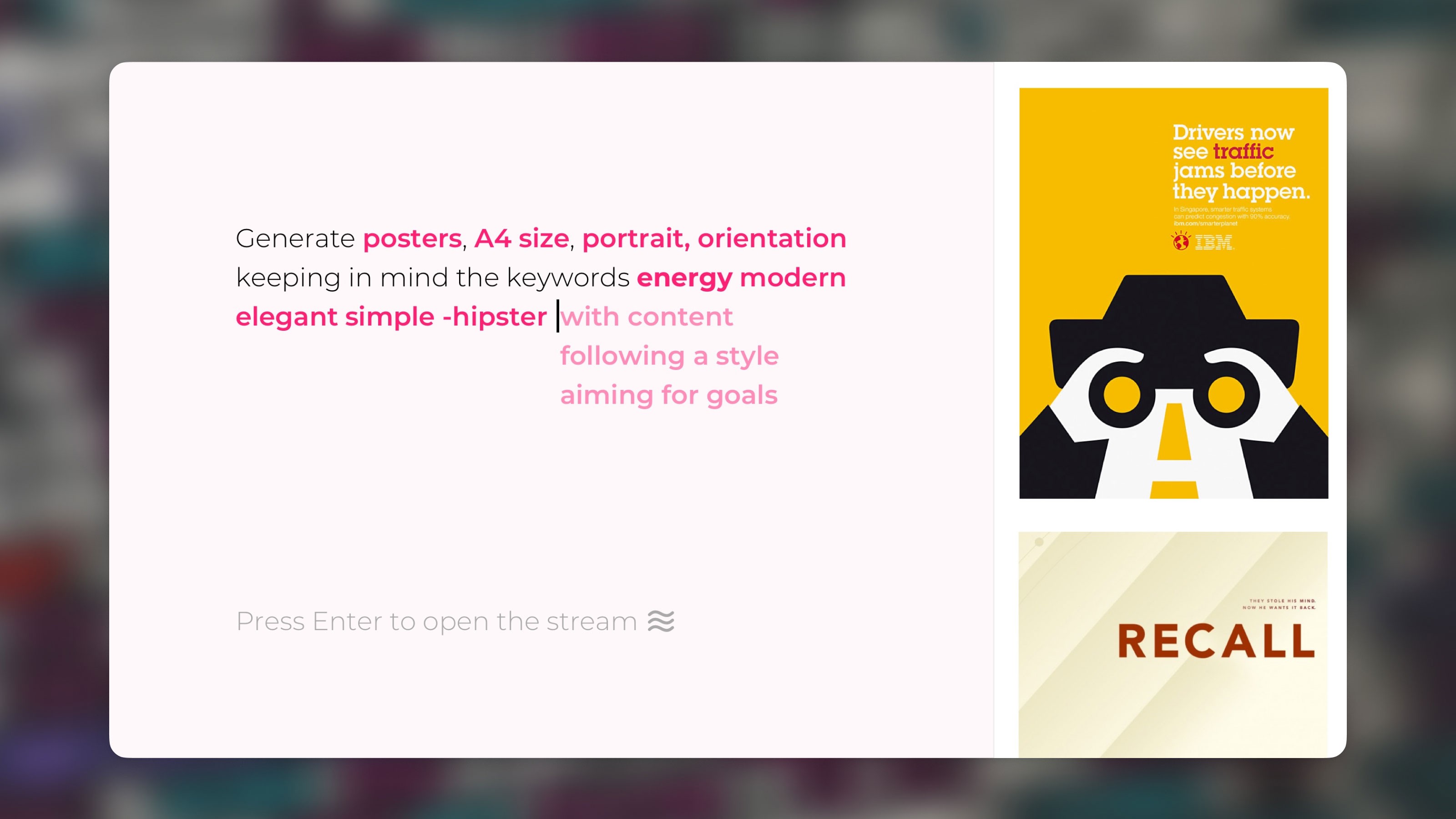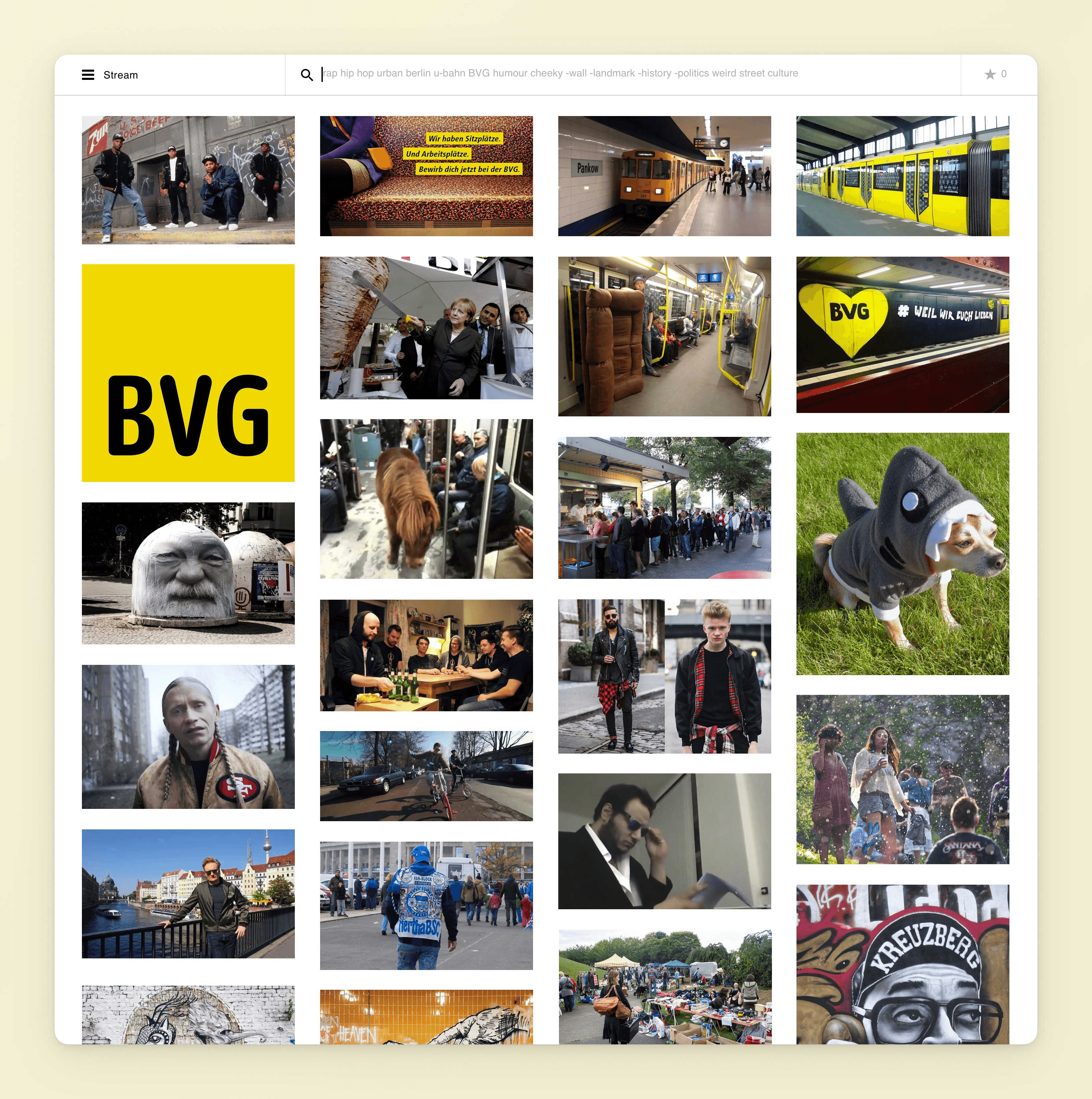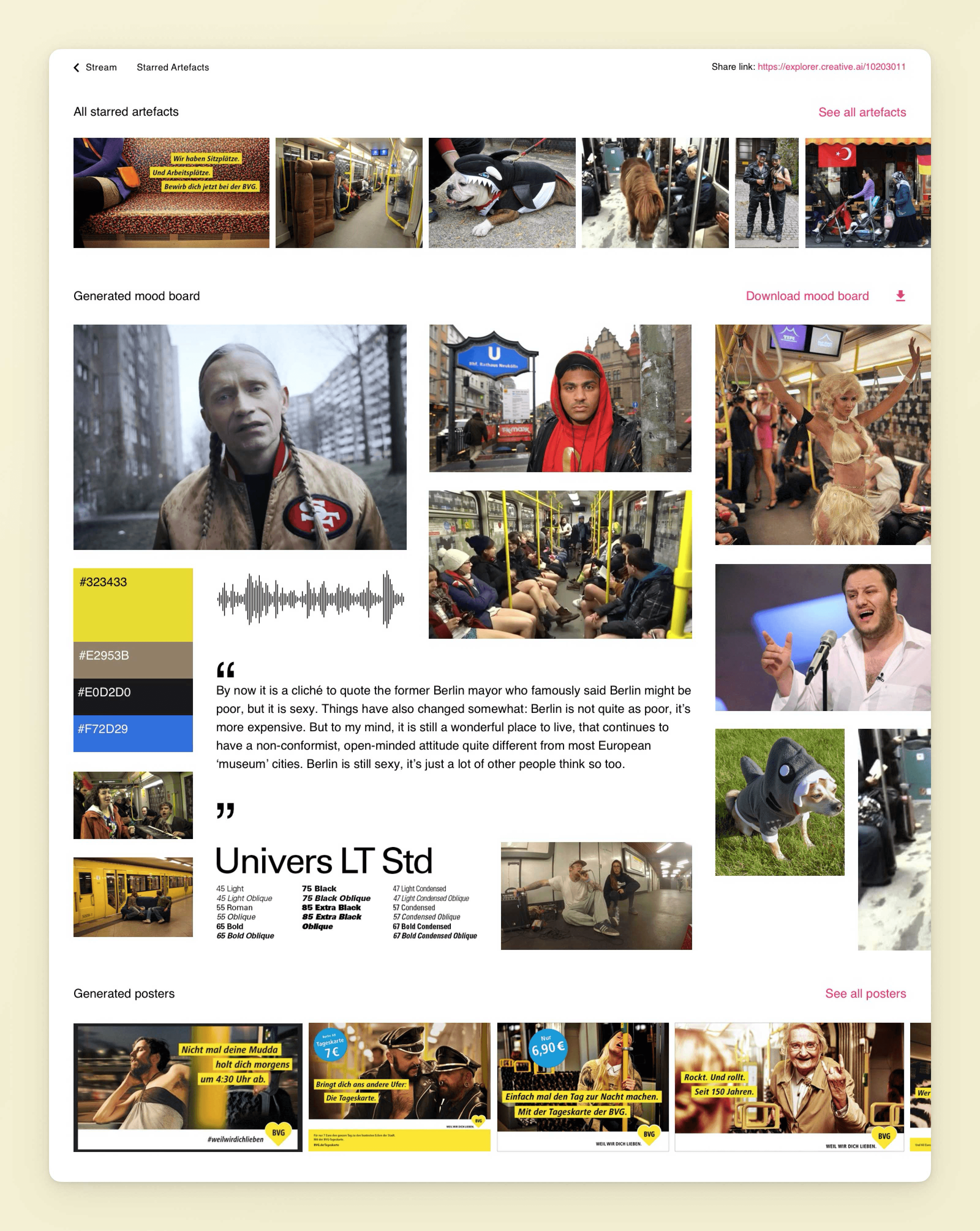
In 2016 I had my first taste of product designing specifically for AI apps. A German AI startup hired me to help them crystallise their vision for a fledgling AI product, powered by some early machine learning code. An exciting journey, but ultimately a product that was ahead of its time.

A series of machine learning generated images.
Like magic.
The app would take user input in the form of search keywords. And then magic would start happening. Using machine learning algorithms, the app would start outputting images, music, videos, posters and entire websites on-the-fly, live. Digital magic, basically.

The machine learning magic at work: by adjusting a few sliders, the algorithm would output new creative works on the fly.
Reimagining digital creation.
This project is a futuristic vision. A moonshot attempt at creating something very, very ambitious — the first product in a completely new era of digital products. One that would change the face of the creative industry throughout the entire world. The biggest thing since Photoshop!

An early version of the design generator app.
The product was ambitious, and in hindsight, over-ambitious given the resources that we had. It was fascinating to explore uncharted lands in the area of human computer interaction, and as a designer I found this to be a great learning experience.
Style transfer.
Possibly the greatest machine learning superpower that will transform the creative industry is the ability to take a creative asset, and apply a completely different style to it.

Style transfer — the magic machine learning superpower that allows for incredible mashups.
This would be a big deal for marketing and advertising agencies, for example, who could explore artistic ideas in record time.
Endless stream of ideas.
The difference between a machine and a human is that the machine will never get tired. We wanted to take unique advantage of that by offering a product that would endlessly generate idea after idea. The human picks the ideas they like, can pause and tweak what's being generated, but the default mode would be a "digital river of endlessly flowing ideas".

Style transfer — the magic machine learning superpower that allows for incredible mashups.
"Hey Siri, design a poster..."
Our line of thought eventually lit up another idea bulb: we could offer this product as a live assistant by integrating this service with Alexa and Siri.
Creative teams could put a HomePod, or Alexa device in the room, hook it up to our service, and then just have a conversation about their project ideas. The Alexa device would feed the audio to our service, which would interpret it, and when someone says "what if we advertised this product with a James Bond theme?" — boom — you have a mockup generated live on the screen. Person points at the screen "Yes! Exactly like that."

A team of people collaborating with a "design AI".
Then someone else chips in, "I think this looks too juvenile for our target market. Can you make this about 50% more serious?" Person takes a sip of water — boom — new mockup is generated where the typography is changed from a rounded font to a more serif-looking font, and the colours become more subdued. "Yesss! Now we're talking".
Testing the idea.
I built a clickable prototype to get some fresh eyes and fresh perspectives on our product. Even if we can build it, do creatives want it? I interviewed some of my former colleagues, who are also designers, to get a sense for the kind of impression the product would make.
A small selection of insights gained from user testing the prototype on target users.
Overambitious.
With the 20/20 perspective of hindsight, it's easy to conclude that we were overambitious. Not only was our product vision pushing beyond the possibilities of today's technology, but we didn't simplify the product enough. The value proposition was vague, and I to this day find it hard to describe the product because it tries to do so much. Even if we had built it, we would've needed to do a lot more work on our marketing and messaging.
Maybe in a parallel universe a few key pieces clicked together, and our venture took off. Machine learning can do some things amazingly well, but it is still far off the creative AI vision that we were hoping to build. Maybe in a few years, or a decade or two. Who knows.
Explore all work
